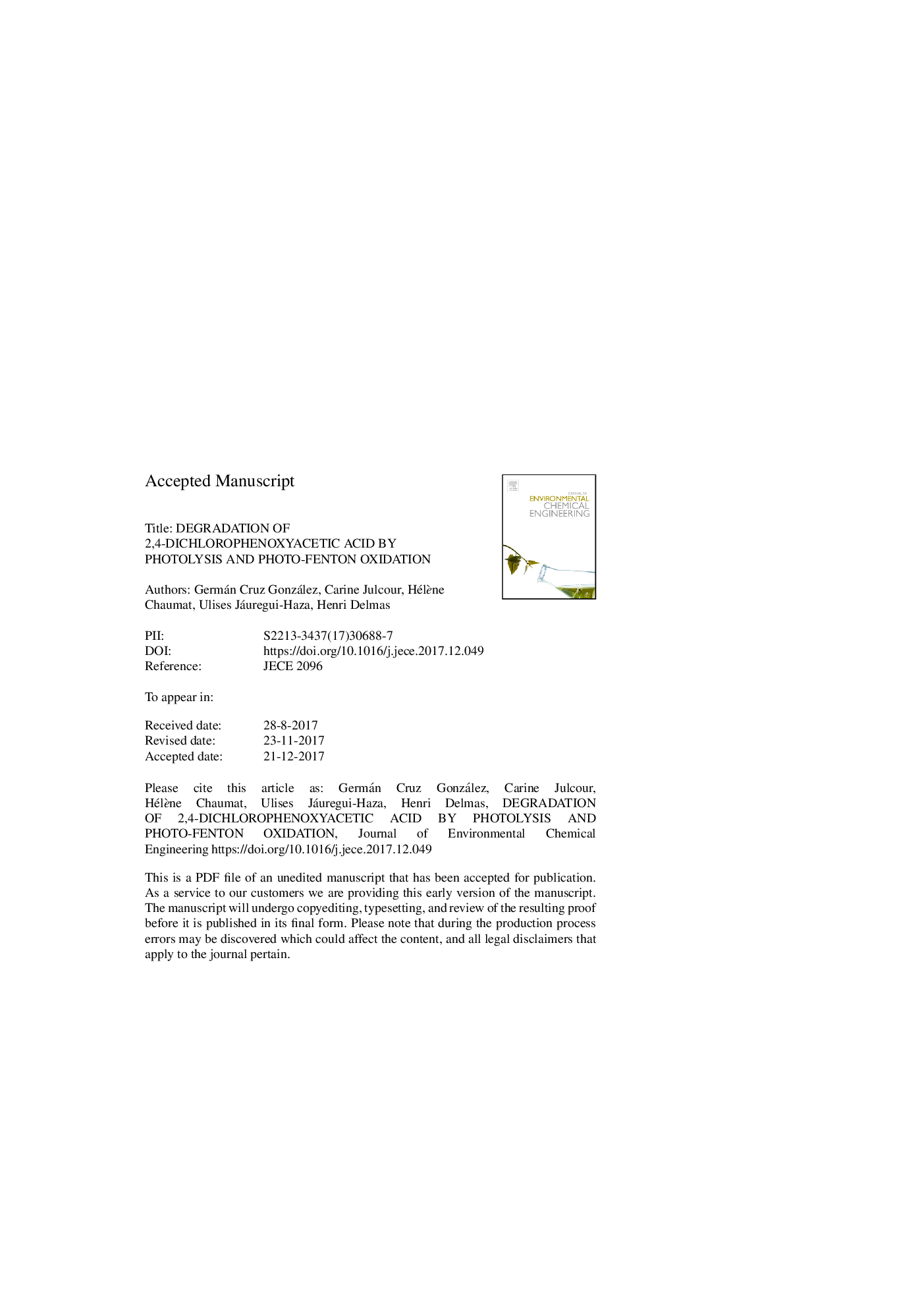| Article ID | Journal | Published Year | Pages | File Type |
|---|---|---|---|---|
| 6664148 | Journal of Environmental Chemical Engineering | 2018 | 23 Pages |
Abstract
This work aimed at comparing different UV and H2O2 based advanced oxidation processes (AOPs) âphotolysis, UV/H2O2, and photo-Fenton reaction- for the degradation of 2,4-dichlorophenoxyacetic acid (2,4-D), a common ingredient of phytosanitary products. The influence of oxidant dose (H2O2), catalyst type and concentration, pollutant concentration, water matrix and irradiation spectrum was also analyzed. Under reference conditions (25â¯mg/L of 2,4-D in osmosed water), photo-Fenton oxidation using Fe2+ salt, initial pH value of 2.6 and a low-pressure mercury vapor lamp (10â¯W, λâ¯=â¯254â¯nm) yielded more than 85% of pollutant mineralization in one hour, as compared to 60% and less than 10% for UV/H2O2 and photolysis, respectively. Such a performance could be achieved in 10â¯min only when applying optimal concentration range for Fenton's reagent (2 to 5 times the stoichiometric amount of H2O2 and oxidant-to-catalyst molar ratio from 25 to 40). Conversely, addition of a ZSM-5 zeolite bearing iron active sites albeit catalyzing Fenton oxidation at natural pH - did not bring additional benefit to UV/H2O2 process. Use of wastewater treatment plant effluent as aqueous matrix or irradiation in the UVA-visible range somewhat lowered the fficiency of the homogeneous photo-Fenton process. Nonetheless, bench scale experiments under sunlight gave promising results for 2,4 D remediation in wastewater, leading to over 80% conversion of the pollutant within ten minutes.
Related Topics
Physical Sciences and Engineering
Chemical Engineering
Chemical Engineering (General)
Authors
Germán Cruz González, Carine Julcour, Hélène Chaumat, Ulises Jáuregui-Haza, Henri Delmas,
